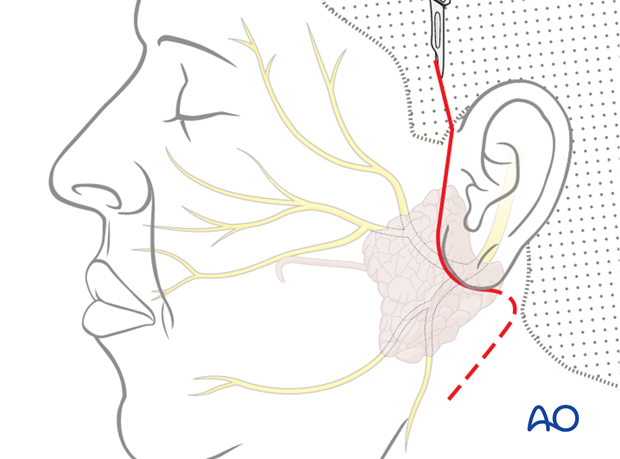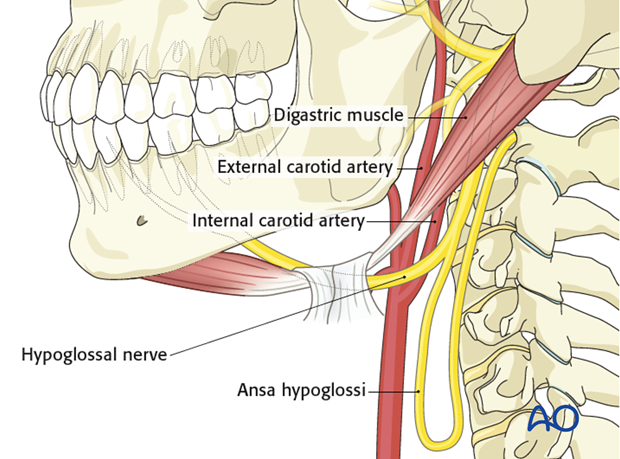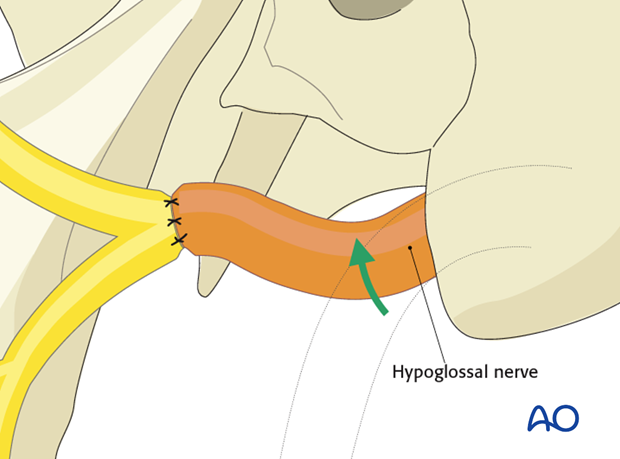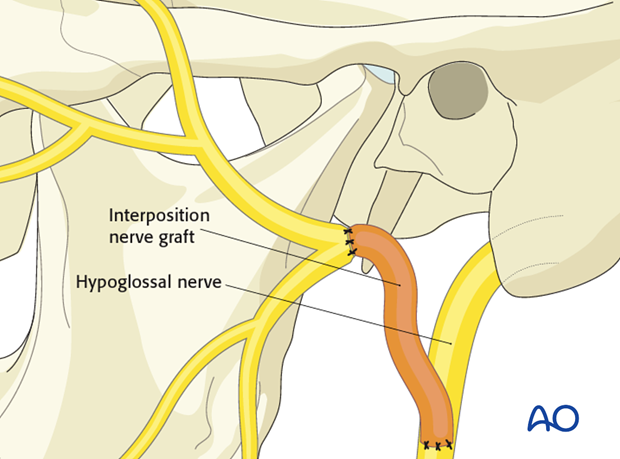Reinnervation with hypoglossal nerve
1. Introduction
There are several options to power the facial nerve. The commonest options include:
- Cross face (contralateral VII)
- Masseteric nerve
- Hypoglossal (XII)
Selective reinnervation can be considered in which a local nerve is used for eye closure and the masseteric nerve is used to power smile.
General considerations regarding nerve repair techniques can be found here.
2. Hypoglossal reinnervation
Approach and branches identification
A facelift or parotidectomy type incision is performed. If present, existing lacerations may also be used.

Hypoglossal nerve identification
The hypoglossal nerve is exposed through the neck extension of the facelift or parotidectomy type incision.

Hypoglossal nerve can be identified by the following three ways:
- Nerve crosses just above the bifurcation of the carotid artery
- Identify the ansa hypoglossi and follow it up to hypoglossal
- At a plane deep to digastric muscle

Hypoglossal nerve coaptation
Traditionally, the entire hypoglossal nerve was used in an end-to-end coaptation. However, this results in significant patient morbidity from a tongue palsy.

As a result, an end-to-side coaptation (using an interposition nerve graft) is performed. This has less effect on tongue function and it is better tolerated by patients.

Static suspension may be used to augment reinnervation procedures, in order to improve facial symmetry at rest, especially during the period of facial nerve recovery.
Closure
The skin incision is closed in layers.
3. Aftercare
Routine wound care is all that is necessary for the majority of the procedures.













